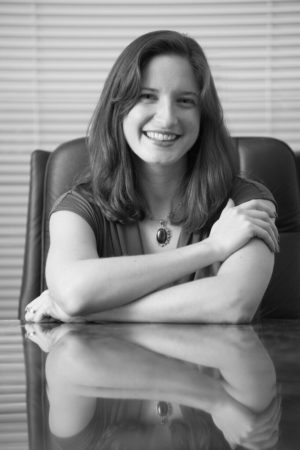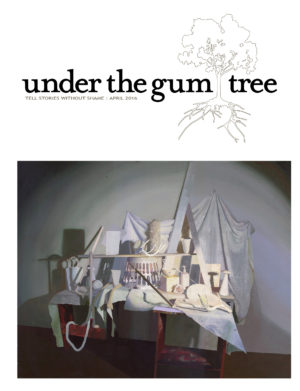Sarah Wells

Sarah M. Wells is the author of a novella-length essay, The Valley of Achor, available on Kindle, a collection of poems, Pruning Burning Bushes, and a chapbook of poems, Acquiesce, winner of the 2008 Starting Gate Award. Poems and essays by Wells have appeared recently in Ascent, Brevity, Full Grown People, Hippocampus Review, The Pinch, River Teeth, and elsewhere. Wells’s work has been honored with three Pushcart Prize nominations. Her essays have been listed as Notable Essays in The Best American Essays 2012, 2013, 2014, and 2015. She serves as the Senior Managing Editor for the Weatherhead School of Management at Case Western Reserve University. Follow her at @sarah_wells and sarahmariewells.com.
When did you start writing and why? What inspires your writing now?
I started writing as soon as I could hold a pencil, trying to communicate the way that I saw and experienced the world, although I’m sure I wouldn’t have put it that way as a first grader. I loved stories and I loved to try to tell stories. These days, I find myself falling in the Flannery O’Connor camp, “I write because I don’t know what I think until I read what I say.” I go to the page to process through the questions I have. Sometimes I find answers, sometimes I find more questions, but inevitably, I know myself better afterward.
Your piece is written in the first person. Why did you choose to write in this style and what do you think it adds to the piece?
As an essayist, my degree of authority on the subject of miscarriages is limited to my own experience . . . plus a little bit of Googling. In this particular essay, the first person narrator is the most intimate voice for a very intimate subject while also establishing what the reader ought to expect from this essay—had I chosen to write in third person, for instance, the reader might assume a greater distance between the author and this Sarah-character on the page. It also mattered a lot to me to stay close to the first person narrator’s experience through each of the four miscarriages, because the emotional center for each of those experiences changed so much for me. To write with any greater distance would have made it more difficult for me to stay within the space I inhabited during each of those seasons.
In your opinion, what criteria does an event have to meet to make a decent subject for a creative nonfiction piece?
Any event can make a decent subject for a nonfiction piece . . . if the writer is able to make meaning from the event. As Vivian Gornick is often and rightly quoted for saying, “Truth in memoir is achieved not through a recital of actual events; it is achieved when the reader comes to believe that the writer is working hard to engage with the experience at hand. What happened to the writer is not what matters; what matters is the large sense that the writer is able to make of what happened.”
You use a lot of figurative language and metaphorical devices throughout the piece. What do you look for in a symbolic image and how important do you think they are to nonfiction pieces?
I find similes and metaphors like quarters tucked between couch cushions. Oops, there’s one again. In this way, I don’t usually set out to make a metaphor out of something. Two possible approaches occur when I write: either the metaphor surfaces out of the subject matter, which is what occurred in many of the metaphorical images in “The Body Is Not a Coffin,” or I begin the writing process with an image, and through the writing of that image I discover greater meaning or association. In either case, the symbolic image evolves organically. The trick is to pay attention. One stumbling block to being real good at figurative language is forgetting or intentionally failing to assign some meaning to the thing. If I’m embarrassed or ashamed about the subject I’m trying to write about, I can misuse metaphor to bury the subject. I think these literary devices are all tools that help us define that amorphous “voice” we like to talk about finding all the time.
The piece overflows with descriptive scientific and anatomical diction. This seems to separate your narrative from the events depicted. How did you approach narrative distance in creating this piece?
This was a challenge I tried to overcome by incorporating research about miscarriages at points when the narrator was doing research herself, or talking to the doctor. I also tried to humanize the scientific terms by enclosing it with the way I might talk or think through things when I’m not referencing a medical journal. The scientific data and diction I included had to have a reason of being there beyond that I had learned it while completing my research, and it couldn’t be excessive. As the narrator, it was also important to me to assume that my reader didn’t know what the heck the doctor was talking about either and to provide the background information as it seemed appropriate.
The narrative reflects on many heartbreaking miscarriages. Was the writing process therapeutic? Did writing the piece provide any personal growth or reflection?
I began writing the initial scratches toward an essay about miscarriage after the first miscarriage happened and kept a Word doc of attempts toward telling how this experience impacted me early on, but my own ability to tell the story and my own distance from the grief over what had happened wasn’t enough yet to go anywhere. Those early drafts were therapeutic, but they weren’t art. By the time I finally felt ready to write through this experience, I had had four miscarriages and two live births. I had also spent years reading and practicing the craft of writing. I could see the change from who I was at twenty-two to the person I was as I sat down to write this essay, and I could label each of the miscarriages with a different emotional center (sad, angry, guilty, accepting), but beyond that, I wanted to discover how this experience had shaped who I am spiritually and how I wrestled with my idea of God and faith through these experiences. The writing process in this essay helped me to solidify the story I had been telling myself about these experiences.
You end on a very spiritual note and the verbs remember, hear, open. Describe what these verbs mean to you.
“Remember, hear, open” for me capture the essence of faith in the everyday: In order to move forward through any crisis or uncertainty, we have to remember what faithfulness came before. We have to be able to listen, to settle our spirits and the constant rush of noise, in order to hear truth, wisdom, peace, and love. And we have to remain open. This is one of the hardest elements of faith and religion today. What we witness among some religious people today are the opposites of these verbs: forget, drown out, close. When so many people claim to have all of the answers, they shut down the possibility they could be wrong and deny the obvious fact of faith—there is no certainty about any of this. There is only faith, hope, and love, the truth of what we’ve experienced and the memory of what has come previously. To close in is to shut out mystery, and what is more mysterious than our notions of who—or what—God is? The callous of close-mindedness hardens our hearts to the very thing we declare that God is—love—and if the statement “God is love” is all we know, we must allow ourselves to stay open to mystery, to humility, to revelation, and to wisdom, in order to operate out of that love.




